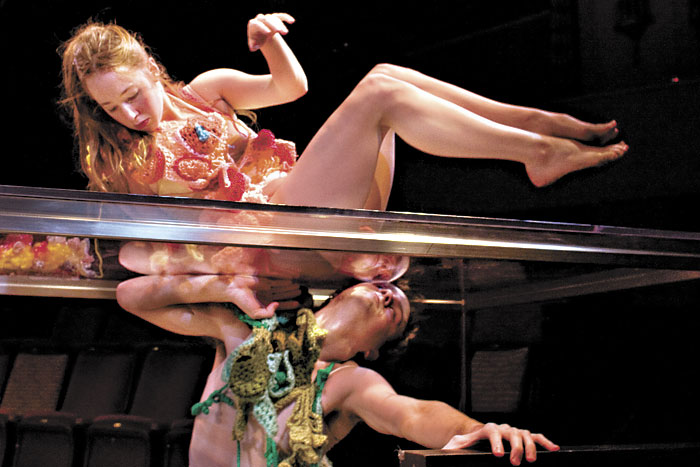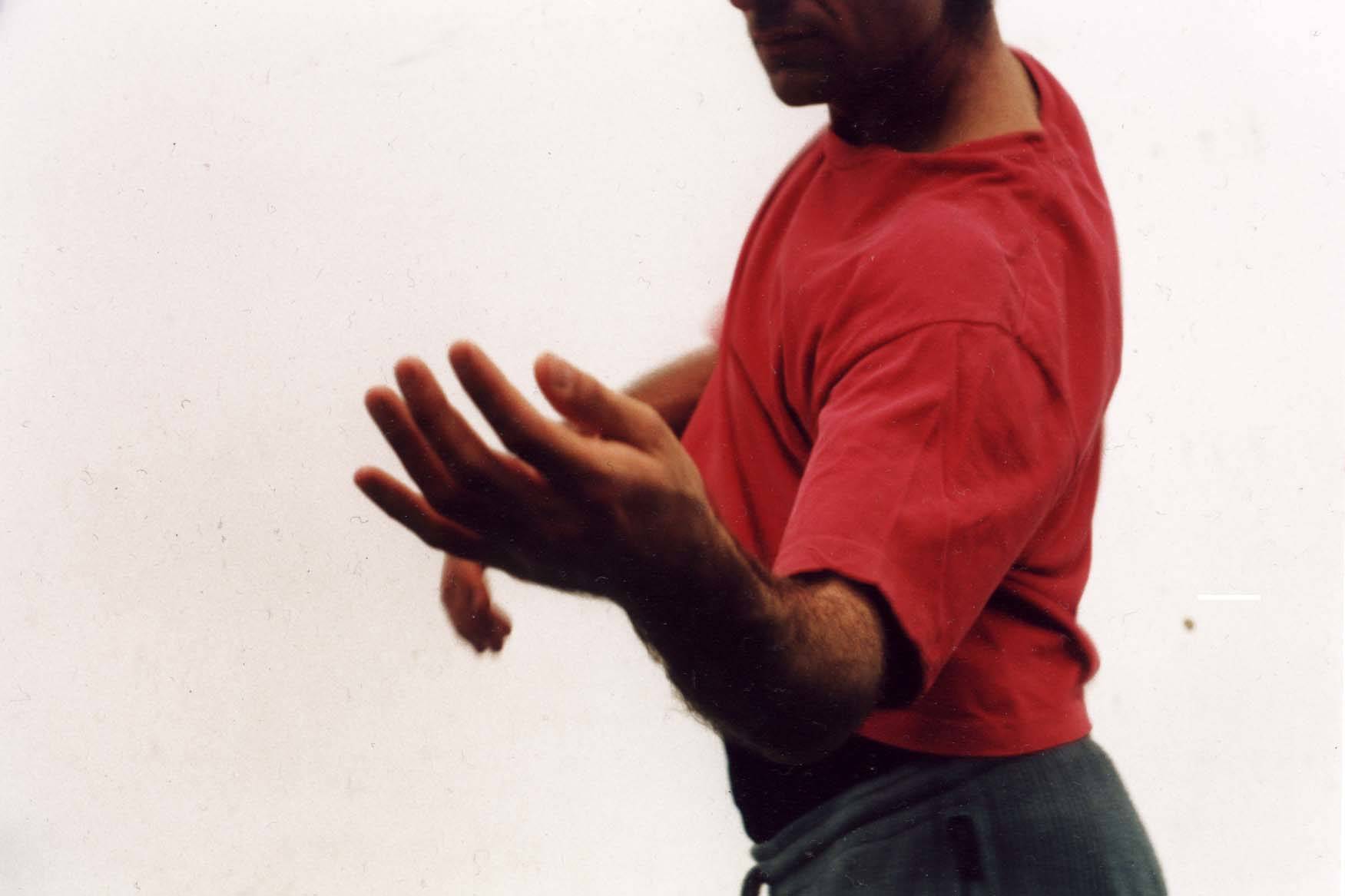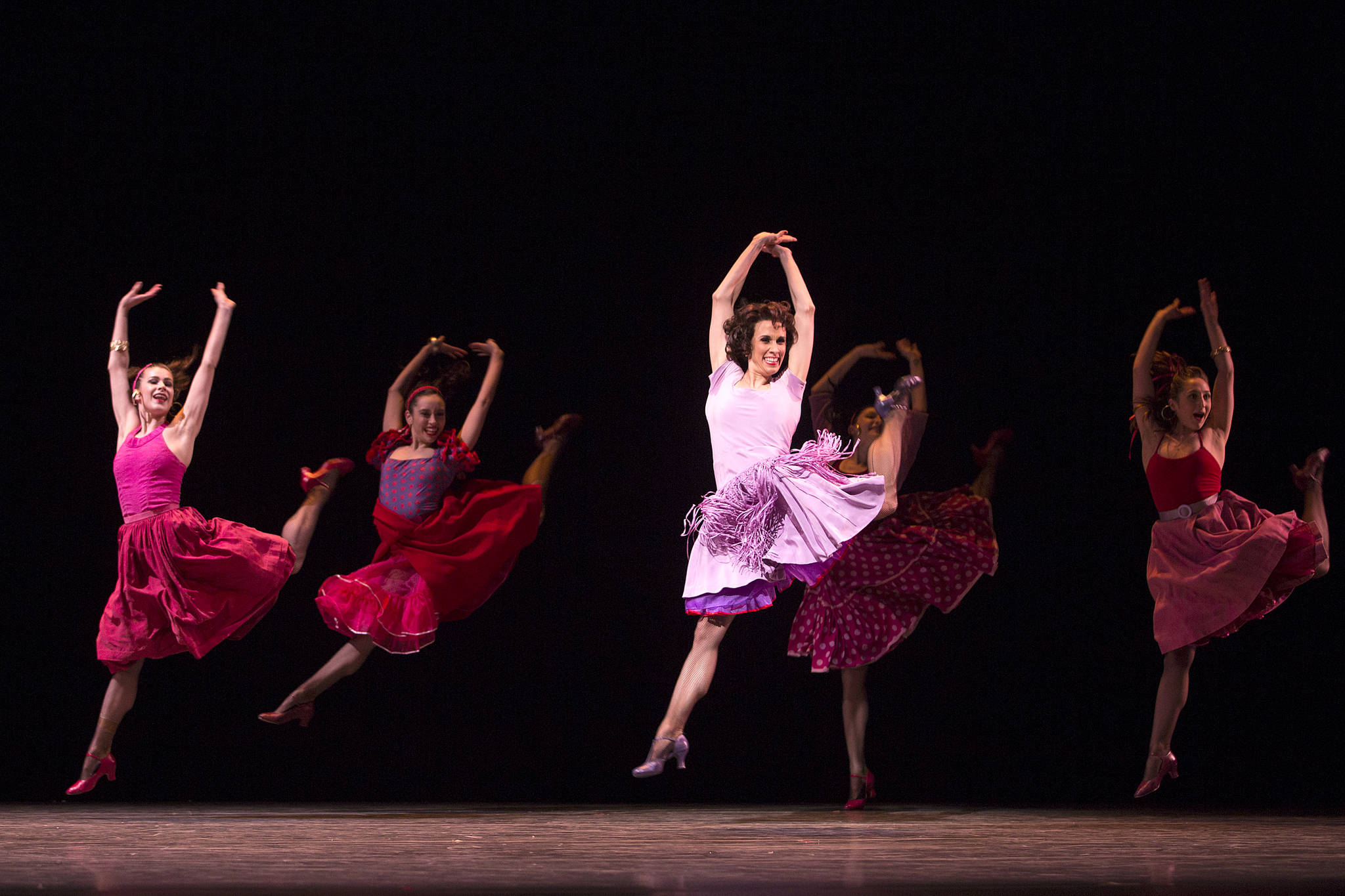Right now it’s even money which will arrive first—Maureen Whiting’s baby or the premiere of her new work, The Myth of Me and You. One thing’s for sure: The dance has been through a longer gestation period.
Whiting has been workshopping Myth for almost a year in a luxuriously long residency at ACT’s Central Heating Lab program. Before that she was developing the piece as part of a three-year stay at Seattle U. At recent public showings of Myth, she was still adjusting and shaping it, getting feedback from the audience. “I want to make something they will be moved by,” she says, “something they wouldn’t have imagined.” More often than not, she succeeds.
With a mostly ballet background, Whiting started out making fairly conventional work, but this shifted quickly as she learned to improvise. Her work changed from the formal postmodern constructs of many contemporary choreographers to something more emotional and organic. The pieces are filled with dreamy, hallucinogenic images. In the course of an evening, I’ve been reminded of childbirth, automated dialing, and landscape paintings, with echoes of more recognizable dance activities just floating at the edges of the stage. The movement isn’t clearly drawn from any conventional vocabularies, but nor does it come directly from alternative strains like butoh or contact improvisation. As with Pat Graney, whose extended development process makes her new work even rarer, Whiting seems to have educated herself as a choreographer.
If there’s any ongoing thread in her work, it’s evolution—a set of images or ideas develops naturally from the previous set, but not necessarily following the pathway you might have predicted. Her work makes sense in retrospect; but in the moment, you just keep your eyes open and your brain engaged. Whiting’s audience tends to be passionate. It’s like the bagpipes: You either love them or hate them—there’s not much middle ground.
As with the movement, the dancers seem freshly drawn for the occasion. Whiting has worked with several of the city’s most proficient artists, but they seem to find a totally different part of themselves when they appear in her material. Ezra Dickinson and Marissa Niederhauser have both shone for other choreographers, but in Whiting’s work it’s as if they’ve developed a more porous skin—they are softer versions of themselves. Julie Tobiason, who for many years was a principal dancer with Pacific Northwest Ballet, has appeared in several of Whiting’s dances, leaving her ballerina past far behind as she crawled along the floor. The work Tobiason recently commissioned from Whiting for her own Seattle Dance Project was unlike everything else on that finely-tuned program, an essay made of subtle physical adjustments contrasting with piano solos by Chopin.
The physical environment of Whiting’s works is always original too. Her collaborations with visual artists have led to costumes far from the sleek tights and tunics we see in most dance programming. In various works, the dancers have worn blue shag-carpet wigs, long, seaweedy draperies, and webbing that looks like macrame shopping bags. Myth, with costumes by Helga Hizer, features a hat made from hard candies that rattles as the performer shakes her head. [This story has been corrected since it was first posted. It originally credited the costumes to Whiting’s scene-design partner Etta Lilienthal.]
Whiting’s interest in mythology began on a trip to India to meet her husband’s family. Seeing the relationship of daily life to ritual made her curious about her own polyglot American heritage. An epiphany came during a 2007 performance.
“I made a piece called Wandering Bear and I was in a bear head. I’d just had a baby and wanted to be inside something—a big mattress with fur on it. So I’m sitting in this bear head, and it just struck me there’s a mythology for all these creatures I had onstage, creating this world. [Merce] Cunningham and those others are brilliant, and I should let those geniuses be who they are, and figure out what I’m doing. Which freed me up to do stuff I never thought I’d do, to find a mythology.”








